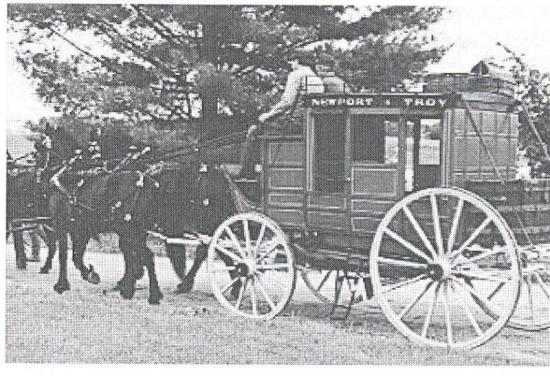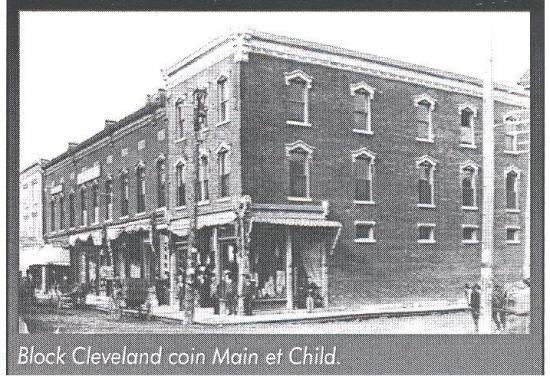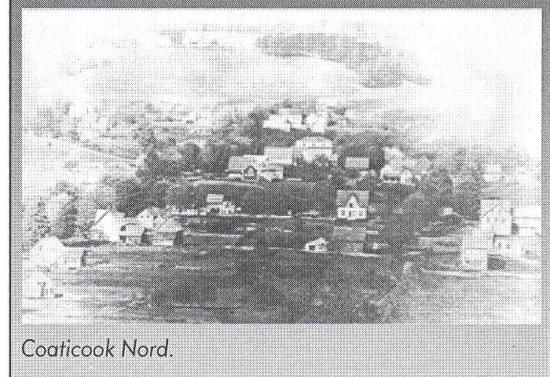
Even though today the stagecoach remains a part of our collective memory, it once was a viable means of transportation before the age of airplanes, automobiles and trains. It is neces¬sary to think that a highway network had to be in place where the stagecoach might be used in Quebec and research does in¬dicate that the first such route was established in 1663 between Cap Rouge and Cap Tourmente (40 km.). Between 1709 and 1713 the first roads were constructed for additional routes from Levis to Rivière-du-Loup, from Montreal ta Quebec, etc.
The vehicles in use ta transport people during this early pe¬riod were various types of carriages and buggies such as the barouche, the cabriolet, and the caleche. Of course, these carriages were only used over short distances. The use of the carriages was dependent upon the availability of horses and according to information available, there were only 156 horses in Quebec in 1685. In order to be able to travel over longer dis¬tances, the stagecoach was introduced. We have a high regard for the stagecoaches that were in use here in Quebec while also recalling that at the same time stagecoaches were also very popular in the United States during the era of the "cowboy".
At the close of the 1 9th century, considering that the postal carriers had too much mail to carry, the stagecoach was in¬troduced. In 1792, the stagecoach was simply called "the stage", an English term. The French term of "diligence" for stagecoach came into use many years later but the "stage" was a popular term also used over a period of many years. It was not long before the stagecoaches began to carry passengers as well as the mail. In Lower Canada the types of stagecoaches used were a bit different from those used in the United States. In Canada the coaches were drawn by two or four horses while in the United States the stages were drawn by four, six or maybe even eight horses and these last ones were the most comfortable.
The oldest stagecoaches in Lower Canada ran between La Prairie/St. Jean in 1792 and in 1799, Montreal/St. Jean and Montreal/Quebec.
Numerous routes were established between 1800 and 1850. Stanstead was an important station in our area. It was the main point of entry from Lower Canada to stations located in Vermont and New Hampshire. In 1810, a new stagecoach line (refer to article) went from Quebec to Boston by way of Stanstead. The stagecoach would make stops along the way at Compton, Hatley, Barnston and then Stanstead. However, this last route was closed in 1812 for various reasons such as poor upkeep of the roads, poor road conditions and the 1812 war between Canada and the United States. Mr. Pierre Bureau tried to establish a new route between Three Rivers and Stanstead in 1817 but it was not a successful enter-prise. He was unable to establish the route because the roads were in such poor condition. The business ran for only one year closing at the end of 1818.
PV Hibbard obtained the postal contract and began to transport passengers beginning in 1828. In 1830, he inaugurated the new route between Three Rivers/Stanstead and went through Nicolet, Drummondville, Richmond, Sherbrooke, Compton and Hatley twice a week and three times a week by 1833. The passenger rate to ride in a stagecoach was $5.00 from Stanstead to Montreal and $4.00 from Three Rivers to Stanstead.
The-decline of the stagecoach began with the arrival of the steam engine around 1860 (1853 in Coaticook). The stagecoaches were used at this time to bring passengers from the surrounding villages to meet the train at the train station. However, with the arrival of the automobile at the beginning of the twentieth century, the stage-coach era came to a close. We can say that the stagecoach served a useful purpose at the time and helped in the development of our country.
If this small article has sparked your imagination and you want to learn more about the subject of stagecoaches, please read the book written by Pierre Lambert entitled "Les anciennes diligences du Quebec", which is available for reading in the Francoise-Maurice Library, Coaticook, Que.




